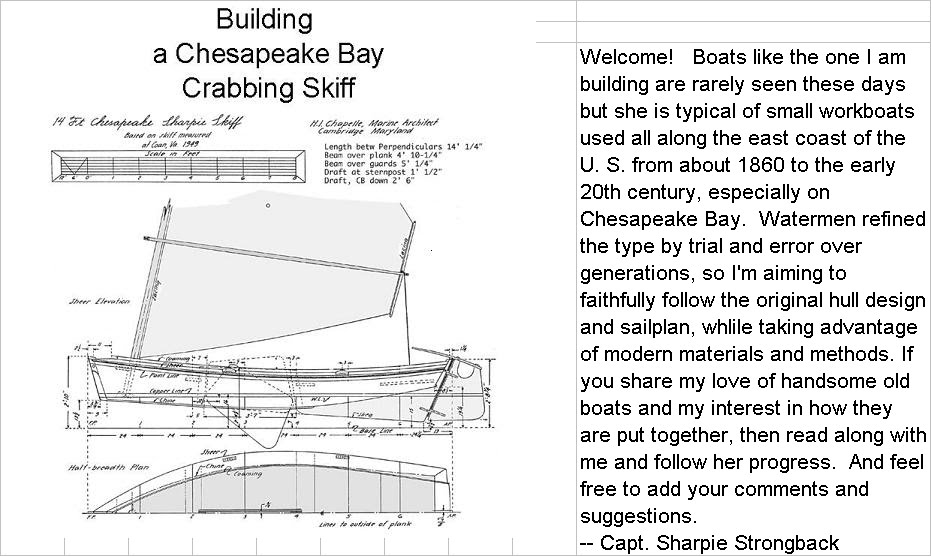The hard part of making the sternsheets was in the planning. It took a lot of time to figure out exactly where the two cross supports should be and how to attach them there, and a bit more time to calculate how wide each of the six planks should be. but once I had the plan the work went smoothly. I ripped the planks to width, dressed them on the thickness planer, routed the edges round, and screwed them to the supports. The two outside planks were the hardest because they needed to be tapered and also cut out to fit around two frames on each side. Once screwed down, I marked and trimmed and routed the forward ends so they were even with one another. The sternsheets are done, at least to the dry fit level. They'll still need to be taken off, sealed, painted, and screwed back on. I will not glue them down, because I want to be able to get under them for cleaning and painting in the future.
I still had time today to start on the deck, beginning with the piece at the bow which must take a sharp bend to form an unusually high crown. I would have made the deck flatter, but that's what the plans call for. To allow the plywood to bend more than it wants to I cut shallow grooves fore and aft in the foremost few inches of the underside. I screwed that piece down, despite a little groaning from the plywood, and before shutting down for the day I covered that piece with a hot wet towel, to encourage the plywood to get comfortable with the shape. Tomorrow I should be able to get the whole deck roughed in and maybe start on the coaming.
I have decided to press ahead with the final pieces (the sternsheets, deck, coaming, and rub rail) and get them all dry fit. Then I'll disassemble those pieces, paint the inside of the boat, seal the removed pieces, paint them where it will be impossible to reach once they are in their final position, then reassemble them, glass the deck and the outside of the coaming, and do the finish painting. Three reasons: I'm starting to get impatient, and want to see it all together. But more importantly, doing it that way will make it possible to do much of the sealing and painting steps at the same time, and will make it easier to get the finish and assembly steps in the right sequence.
I saw on YouTube a video of a Goat Island Skiff, not too different from this boat, showing its stuff in a strong breeze. Looks lively; I hope not excessively so. My hope is that Tugga Bugga will be a reasonably forgiving boat for grandkids to learn on and comfortable for me to sail for many years in the future. It would be an irony if Tugga Bugga turns out to be fast but tender: our old FJ had those qualities, and that was the reason I sold it and started this project in the first place.
Anyway, it's good to be thinking about what happens after the boat is built, besides sailing her. I haven't finally decided how she will be stored; could be at anchor for short periods, maybe kept on a davit, maybe hauled up on a roller ramp which would need to be built. Will I want a trailer? How about a cockpit cover?
Saturday, November 20, 2010
Subscribe to:
Post Comments (Atom)



No comments:
Post a Comment